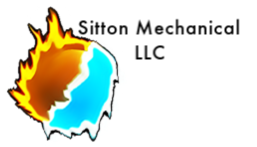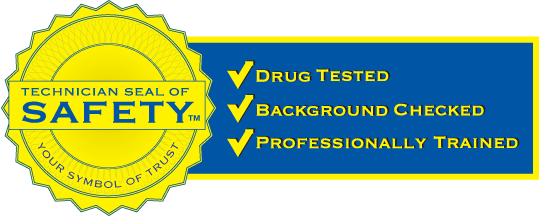Is it Time to Replace My Furnace?
Whether you live in Perkins, OK, or New York City, you rely on your furnace to keep your home comfortable and safe throughout the winter months. When your furnace stops working, it’s not only an inconvenience; it’s an emergency.
It’s important to watch for signs that your furnace needs replacement, so you don’t end up without heat when you need it. Keep reading to find out whether it’s time to replace your old heater.
Furnace Repair vs. Furnace Replacement
It’s difficult to know whether you should get repairs to your furnace or opt for a full replacement. Annual maintenance to your heater is very important to keep it running smoothly through its service life.
If you want to avoid preemptively replacing your furnace, you’ll need a professional HVAC technician to maintain it at least once each year. During your maintenance appointment, your technician will:
- Change all air filters
- Lubricate all of the moving parts, including blower bearings and the motor
- Inspect your unit’s heat exchanger
- Check your electrical wiring and replace it if there’s damage
- Thoroughly clean the inside of your furnace
- Inspect your unit’s flue pipe and gas line
Even though regular maintenance will keep your furnace in top condition, eventually, all heaters will need to be replaced. When determining if it’s time to replace your heater instead of getting repairs, the most important thing to keep in mind is the age of your unit.
All furnaces have a natural lifespan, and though some will last longer than others, eventually, you’ll have to replace yours. In general, furnaces last about 15 to 20 years, depending on the type.
If you have a gas furnace, 20 years is probably the longest amount of time it will be functioning without needing costly repairs. However, electric furnaces tend to last a bit longer, and a well-maintained electric furnace can even last upwards of 30 years in some cases.
Also, if you’ve needed frequent repairs on your furnace, it may be advantageous to replace your unit. As your heater ages, it will incur more wear and tear. Over time, the cost of repairs could total more than if you’d replaced your unit. You should also keep in mind that an inefficient unit could be driving up your energy bills.
When determining whether to replace your old furnace, you should look at the amount of money you could save with a new unit despite the upfront cost. Safety should also be a top priority.
Some of the signs we’ll discuss below come with safety risks, so if your heater is having any issues that could put you in danger, that’s a clear sign you need a furnace replacement as fast as possible.
Signs it’s Time to Replace Your Furnace
There are some telltale signs you’ll notice when your heating system needs an upgrade. Here are some of the top indicators that it’s time to replace your furnace:
A Collection of Soot In Your Furnace
If you see a large collection of soot near your furnace, this could mean your old heater is suffering from incomplete combustion. Usually, you’ll see this soot collecting near the furnace exhaust and burners.
Not only is this soot bad for your home, but it shows your furnace isn’t working properly, which can lead to higher energy bills and even a safety risk. If you see a large collection of soot near your heater, you should call a professional HVAC company to inspect your unit to determine whether you need a replacement.
Visible Damage on Your Furnace
Visible damage to your furnace is a strong sign you need a replacement. Sometimes, cracks can be repaired, but if you see a buildup of rust or major damage on an aging unit, it’s likely that replacement will be the most cost-effective option in the long run.
Additionally, damage to your unit may indicate a safety risk, so it’s important to have a professional inspect your unit anytime you see rust or cracks on your furnace.
Higher Energy Bills or Repair Costs
As your furnace ages, it becomes less efficient. Your unit needs to work harder to get the temperature to your desired level. This inefficiency means your energy bills will start to steadily increase each month as your system comes to the end of its lifespan.
If you’ve noticed your bills are going up this year, especially if your furnace is over 15 years old, it means you probably need to replace your unit. Even though you’ll have to pay for the new heating system, it will be more cost-effective over time to go with a brand-new furnace.
Along the same lines, expensive repairs really add up over time. As your furnace ages, repairs are more likely. In some cases, it’s worth it to repair your unit, but if you need frequent repairs that are getting more expensive, it’s probably in your best interest to invest in an upgrade.
Again, you’ll need to pay more money upfront, but you’ll save money down the line with an efficient heater that doesn’t need repairs. Just make sure to schedule your annual maintenance appointments to keep your new heater in prime condition as long as possible.
A Yellow Furnace Flame
Your furnace flame should be blue when it’s working properly. If you see a yellow flame inside, this could mean your heater is producing carbon monoxide, a poisonous gas at a higher rate than normal.
It could also mean you have a gas pressure issue. If you notice a yellow flame in your furnace or smell gas in your home, you should have a professional inspect your heater for safety immediately.
Strange Sounds Coming from Your Furnace
No one wants to hear strange noises coming from their furnace – and for a good reason. When you hear a new sound coming from your heater, it means you’ll likely need repairs or furnace replacement. Here are some of the various noises you might encounter and what they could mean:
Ratting
Loose components inside your heater may cause a rattling noise. Repairs are often possible but don’t ignore a rattling heater too long. Eventually, the loose part could break off and wreak havoc on the inside of your heater, causing further damage and more costly repairs.
Screeching
You could also hear a screeching noise, which often indicates a damaged blower motor. It could also mean you have a damaged blower wheel, so it’s important to have a professional check it out.
Popping
A popping noise means the temperature inside your furnace is fluctuating. This sound is rarely cause for major concern, but you should call a professional if the noise continues frequently.
Clicking
When you hear a clicking noise, it means your ignitor or flame sensor is malfunctioning. This condition is a common problem with many furnaces, and often, quick repairs are all that’s needed.
Booming
This noise is, by far, the worst sound to hear coming from your heater. A booming sound means there’s a problem with your ignition process, causing a delay. As this happens, dangerous gas builds up in your furnace, which can lead to a gas leak in your home.
Carbon monoxide is a poisonous gas, and it can pose a serious risk to anyone in your home. If you hear a booming sound coming from your furnace, don’t delay in calling a professional. They can inspect your unit for safety and recommend the next steps.
Your Heating Experts
If you need a furnace upgrade in Perkins, OK, look no further than the trusted team at Sitton Mechanical LLC. We offer expert heating maintenance, repairs, and replacement, so call us today to schedule your appointment.




